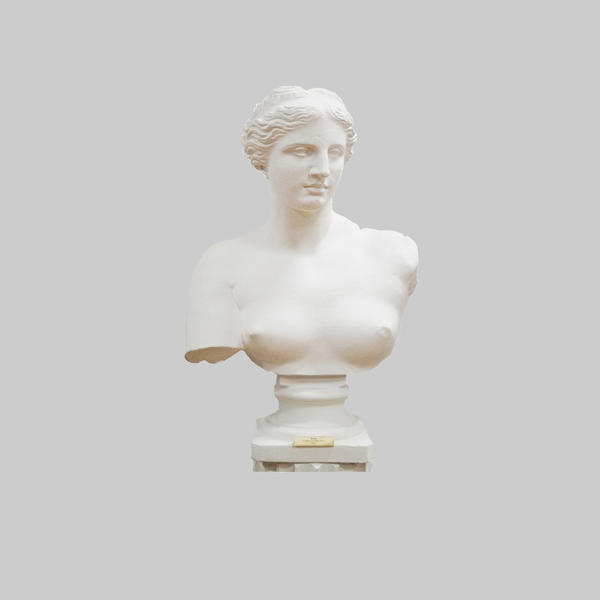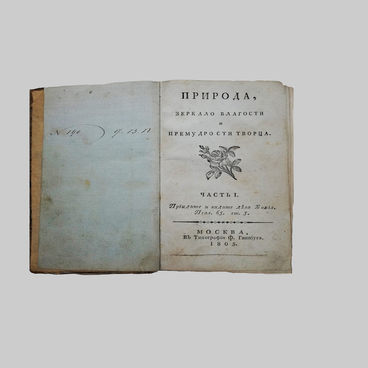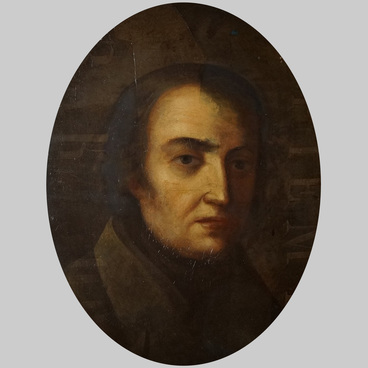The collection of the Arzamas museum contains illustrative items, including paintings, engravings and busts, for the students of the first provincial school of painting. Alexander Stupin, the head teacher of the school, started to gather teaching materials during his stay in the then capital. He sent to Arzamas books, prints, drawings, sketches and antiques – busts and statues copied from classical originals, in particular Gladiator, Faunus and the sculptured group Laocoőn and His Sons. All the masterpieces were kept in two specially equipped halls of the school. When the school was closed in 1861, the sculptures were destroyed.
1 / 2
Bust of Venus
Creation period
the 20th century
Dimensions
83х59х21 cm
Technique
plaster, casting, paint, painting
Exhibition
7
Open in app#1
Mass production
Bust of Venus
#2
#3
The sculpture Bust of Venus was often used for educational purposes in the A.V. Stupin school. In Roman mythology Venus was the goddess of beauty, desire, fertility and prosperity. The cult of Venus began in Ardea and Lavinium, areas in ancient Italy. The very first famous temple of Venus was built in 293 BC.
#4
In 215 BC a temple of Venus was erected on the Capitoline to commemorate the Roman defeat in the Battle of Lake Trasimeno during the Second Punic War. Later on, Venus began to be identified with Aphrodite, a Greek goddess and the mother of Aeneas, who fled from besieged Troy to Italy. Legend has it that his descendants founded Rome; consequently, Venus was believed to be the foremother of the Roman nation. Her symbols were the dove and the hare. In Russia preference is given to the Greek name of the goddess of love, Aphrodite, which came to Russia from Byzantium, while the majority of artists, writers and critics from Western Europe use the variant ‘Venus’. Nowadays these two names are used as synonyms.
The Venus de Milo, which is the best-known sculptural image of Venus in world culture, was found on the island of Melos in the Aegean Sea in 1820. The statue lost its arms afterwards, during the fight between French sailors, who wanted to take it to their country, and Turks. The Venus de Milo is currently the most famous statue in the world. Before it was discovered, however, another work of art was considered to be a model – the Venus de’ Medici. It is from this sculpture that famous painter Sandro Botticelli copied the pose for his work “The Birth of Venus”.
Emperor Napoleon took it to Paris during the Italian campaigns, but in 1815 the Venus de’ Medici had to be returned to Italy. This type is also described by the epithet ‘Venus pudica’ (modest Venus) because the goddess is trying to conceal her nudity shyly. This model was used afterwards by Renaissance masters for their works depicting Eve.
The Venus de Milo, which is the best-known sculptural image of Venus in world culture, was found on the island of Melos in the Aegean Sea in 1820. The statue lost its arms afterwards, during the fight between French sailors, who wanted to take it to their country, and Turks. The Venus de Milo is currently the most famous statue in the world. Before it was discovered, however, another work of art was considered to be a model – the Venus de’ Medici. It is from this sculpture that famous painter Sandro Botticelli copied the pose for his work “The Birth of Venus”.
Emperor Napoleon took it to Paris during the Italian campaigns, but in 1815 the Venus de’ Medici had to be returned to Italy. This type is also described by the epithet ‘Venus pudica’ (modest Venus) because the goddess is trying to conceal her nudity shyly. This model was used afterwards by Renaissance masters for their works depicting Eve.
#5
Municipal budget institution of culture History and Art Museum of the city of Arzamas, Nizhny Novgorod Region
read morehide
00:00
00:00
1x
Bust of Venus
Creation period
the 20th century
Dimensions
83х59х21 cm
Technique
plaster, casting, paint, painting
Exhibition
7
Open in app
Share



